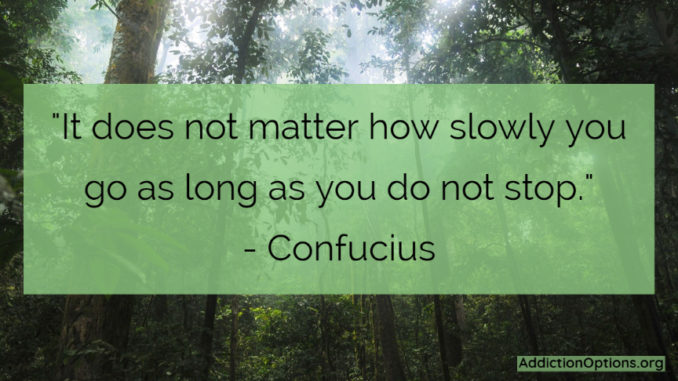
Only one generation ago, people rarely mentioned the word ‘addiction’. Today, however, we face a global opioid epidemic. How did this happen so quickly? The most probable answer to that question is that misinformation jump-started the opioid, or opiate, crisis. When opiates first came out, many people believed they weren’t addictive. As time passed, the truth became clear about just how habit-forming opioids are. Today, the opioid epidemic takes more than 100 lives per day in the US alone. Even more alarming is that, by all accounts, it will continue to take as many lives until something happens to stop the process. Here’s how to know the signs of opiate addiction.
Opiate Addiction
What constitutes an opiate addiction can be confusing, simply because many people aren’t used to the terms opiate or opioid. These are medications derived from various poppy plants and are generally prescribed to treat severe or chronic pain. They function by slowing, or depressing, the body’s reactions to pain as they simultaneously release dopamine that makes the user feel good. Because these medications offer feelings of pleasure and relief, many use them more than prescribed. Furthermore, the body is prone to stop feeling the initial effects after only a short time. These two issues combined can quickly lead to opiate addiction.
What Drugs Are Opiates?
Several medications fall under the category of opiates, including:
- Morphine
- Oxycodone
- Codeine
- Fentanyl
- Methadone
In addition, an illegal drug that falls under the category of an opiate is heroin. However, legally prescribed opiates have similar effects to this illegal counterpart, and for many, addiction happens just as easily. As mentioned, not only does someone in pain feel relief when they take an opiate, but they also feel happier overall due to the release of dopamine. This feeling can feel somewhat like finding something they’ve been searching for their entire lives. They feel elated, but this sensation quickly fades and the person starts to feel the need for more and more medication to try and have that happy feeling again. In chasing that feeling, they may take a dose a little early or take more than a single dose at once. This, in turn, begins a cycle of opiate addiction.
Opiate Epidemic Statistics
Although the statistics regarding opiate addiction are startling, they aren’t enough for many to find alternatives for their chronic pain. Here are some numbers that people should know, in order to put the state of the opioid epidemic in perspective.
- Approximately 10 million people misused some form of opiate in 2018.
- More than 20% of those currently taking a prescription opiate have or will misuse it.
- Out of those who misuse an opiate, about 5% will turn to heroin to try and recreate the initial high.
- In 2018 alone, just under 50,000 people died of an opiate overdose.
By the end of 2018, physicians were still prescribing over 50 opiate prescriptions per 100 people in the US.
Classic Signs of Opiate Addiction
If you’re wondering how to know if you are an addict with opiates, the best way to find out is to stop taking them and look for signs of withdrawal, including:

- Nausea
- Achiness
- Fever
- Chills
- Profuse sweating
- Trouble keeping food down
- Diarrhea
These opiate addiction symptoms indicate that your body is craving uncontrollably and telling you it needs another dose. Opiates alter the brain after taking enough of them by binding to opioid receptors, which tells the brain that not enough of the drug is getting through. In turn, the brain tells the body of the user that they must take a higher dose or take a dose early to achieve the same effect. The more of the drug the person takes, the more control over the brain. This dangerous cycle can easily lead to overdose.
Opiate Addiction Treatment
As more and more people face opioid addiction each year, finding treatment solutions can be dismaying. Once addiction sets in, the addict feels stuck between two different types of pain: opiate withdrawal symptoms on top of their chronic pain. Sadly, there is no perfect treatment solution.
However, there are several treatment options for those with opiate addiction. The most traditional approach is rehab. Although this is a great option, not all opiate addicts have access to this opioid treatment solution. Not only can many not afford it, but many don’t have care for other family members when gone for a month or more. When rehab isn’t an option, self-care is the next best solution. When faced with this as one’s only option, it’s time for the addict to search for substances that will give the body a similar reaction to opiates, except from a safer source.
Some users report that taking kratom helped them overcome their opiate addiction. It can relieve pain, lower anxiety and in some cases, help with depression. While it may not be the ideal solution for all, it could be for you.
The best thing to do is research kratom and then speak with your doctor to see if it would be an option for you. If so, then try a small dose first and slowly increase it until you see how your body responds. Red Indonesian kratom is a strain with which many users have reported success. Other strains that have proven effective for pain are Bali and Maeng Da kratom.
Counseling
Making it through opiate withdrawal symptoms is challenging. However, with the right guidance and support, you can face the challenges and move on to a happy, healthy and sober life. Because many turn to opiates not only for pain, but to feel uplifted or avoid feeling down, opening up about the negative feelings associated with opiate addiction often helps. Counseling is one way to help opiate addicts, or those who are close to addiction, sort through their feelings and manage recovery without medication.

Behavioral Therapy
Another alternative for recovering from opiate addiction is behavioral therapy. This involves working with a counselor, therapist, or psychiatrist to identify destructive behaviors and make plans to change them. This type of therapy helps the addict evaluate the thought process behind unhealthy behaviors and reverse negative thinking to be more conducive to healthy ones. Think of it as a weeding out process that replaces negative behaviors with positive ones.
Although opiate addiction can be difficult to overcome, it is possible to do so. There are many options for treatment that do not involve the use of addictive medications. From alternative pain relievers, such as kratom, to counseling and behavioral therapy, there are ways to break through to the other side of opiate addiction and lead a fulfilling and sober life.
